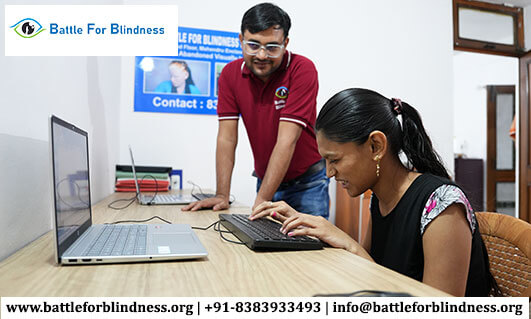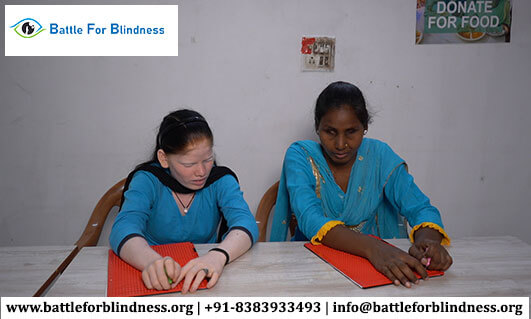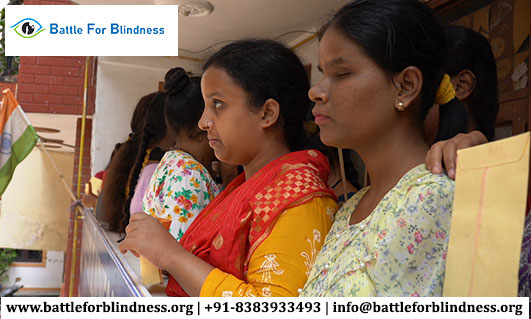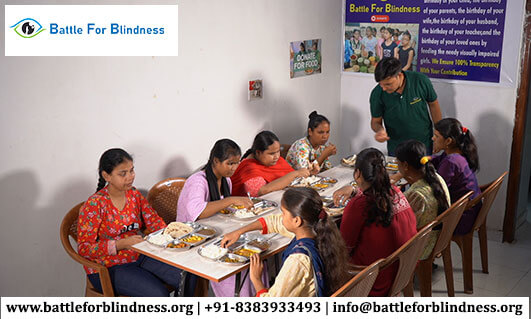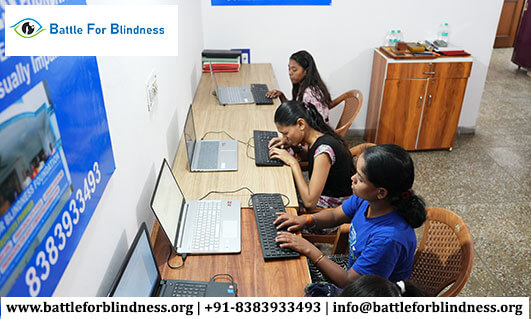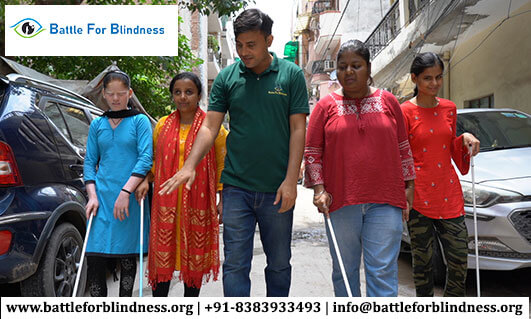
Living with a visual impairment presents unique challenges that affect not only physical well-being but also emotional and mental health. While technology and accessibility improvements have significantly enhanced the lives of the visually impaired, the psychological toll of navigating a sighted world remains a critical issue. Building resilience and fostering mental well-being are essential for those with visual impairments to lead fulfilling and independent lives. In this blog, we’ll explore mental health support and resources that can help visually impaired individuals cultivate resilience and improve their emotional well-being.
1. Understanding the Emotional Impact of Visual Impairment
For many individuals, the loss or absence of vision can lead to feelings of grief, isolation, anxiety, and depression. The psychological effects can be long-lasting, and it’s important to recognize that visual impairment isn’t just about navigating physical spaces; it also impacts self-esteem, social interactions, and one’s sense of independence.
Mental health challenges like depression and anxiety are more common among visually impaired individuals than in the general population. It’s essential for individuals and caregivers to acknowledge the emotional aspects of visual impairment and seek the appropriate support and resources.
2. Building Resilience Through Self-Awareness and Support Systems
Building resilience is an ongoing process that helps individuals cope with adversity, stress, and difficult life changes. For the visually impaired, resilience can be fostered by developing strong self-awareness, emotional intelligence, and a network of support.
-
Self-Awareness: Understanding one’s emotional triggers and developing coping strategies is vital in overcoming daily obstacles. Therapy or counseling can help individuals gain insight into their emotions, stressors, and fears, enabling them to respond more effectively to challenges.
-
Support Systems: Building a strong network of family, friends, and peers is essential. Support groups specifically for the visually impaired provide a platform for individuals to share experiences, offer encouragement, and create a sense of belonging. Peer support can be incredibly uplifting, as individuals who have walked similar paths can offer practical advice and emotional comfort.
3. Access to Professional Mental Health Services
Professional mental health services are crucial in addressing the emotional and psychological needs of visually impaired individuals. These services include therapy, counseling, and psychiatric support that can help individuals navigate feelings of depression, anxiety, and other mental health issues.
-
Cognitive Behavioral Therapy (CBT): CBT is an effective form of therapy that helps individuals identify negative thought patterns and replace them with more constructive behaviors. For visually impaired individuals, CBT can provide tools to reframe negative perceptions about their abilities and encourage more positive thinking.
-
Supportive Counseling: Talking to a therapist who understands the unique challenges of visual impairment can provide a sense of relief and validation. Counselors can help individuals work through feelings of isolation, anxiety, and loss of independence.
4. Technology as a Mental Health Resource
Technology plays a critical role in providing mental health support to the visually impaired. Mobile apps, websites, and specialized software are making it easier for individuals to access mental health resources and engage in therapeutic activities.
-
Mental Health Apps: Apps like Calm, Headspace, and Breethe offer mindfulness and meditation techniques that can help individuals manage stress, anxiety, and depression. Many of these apps are accessible with screen readers, making them perfect tools for the visually impaired.
-
Virtual Therapy: Teletherapy and online counseling have become increasingly popular, especially post-pandemic. Virtual therapy provides a convenient and accessible way for visually impaired individuals to connect with mental health professionals from the comfort of their homes.
-
Assistive Technologies for Emotional Well-Being: Voice-controlled devices like Amazon Alexa or Google Assistant can be used to set reminders for self-care activities, mental health check-ins, and relaxation exercises. These tools offer an easy way to integrate mental health practices into daily routines.
5. Physical Health and Its Impact on Mental Well-Being
Physical health and mental well-being are closely linked. For individuals with visual impairments, regular physical activity can boost mental health by reducing stress, improving mood, and increasing overall resilience. Adaptive sports and fitness programs specifically designed for the visually impaired can foster a sense of accomplishment and well-being.
-
Exercise and Physical Activity: Physical exercise releases endorphins, which are natural mood enhancers. Participating in activities such as swimming, yoga, or walking can provide both physical benefits and emotional resilience.
-
Nutrition and Sleep: A balanced diet and proper sleep are essential for mental health. Nutrition counseling and sleep hygiene practices can significantly improve emotional stability and resilience, particularly for those coping with the emotional challenges of visual impairment.
6. Building Social Connections and Reducing Isolation
Social isolation is a significant concern for many visually impaired individuals, especially when it comes to participating in group activities, socializing, or building meaningful relationships. It’s essential to find ways to connect with others and build a sense of community.
-
Support Groups: Local and online support groups for the visually impaired can provide a safe space to discuss challenges, share stories, and connect with others facing similar experiences. Many organizations, such as The National Federation of the Blind or The Royal National Institute of Blind People (RNIB), offer virtual and in-person support groups.
-
Volunteering and Social Engagement: Engaging in volunteer work or social activities not only provides a sense of purpose but also promotes emotional well-being. Volunteering in local communities or engaging in peer support roles can help visually impaired individuals build a sense of contribution and reduce feelings of isolation.
7. Educational Resources and Advocacy
Education is a powerful tool in promoting mental resilience and emotional well-being. Awareness and understanding of the psychological aspects of visual impairment can lead to more informed discussions, reduced stigma, and improved support systems.
-
Advocacy Organizations: Organizations like Blind Welfare Society, The Blind Foundation, and National Association of Blind Women work tirelessly to advocate for the rights of visually impaired individuals and provide mental health resources, support, and guidance.
-
Educational Workshops and Training: Workshops focused on emotional health, resilience-building, and coping mechanisms can provide valuable skills and strategies for managing mental health challenges. These programs empower individuals with tools to face daily struggles with confidence.
8. Creating a Mental Health-Friendly Environment
An inclusive environment is key to supporting mental well-being. Whether at home, school, or work, fostering spaces where individuals with visual impairments feel comfortable and supported can reduce stress and anxiety. This includes ensuring that accessibility tools are available, as well as promoting understanding and empathy from others.
Conclusion
Building resilience in the face of visual impairment requires a combination of emotional, social, and professional support. By accessing mental health resources, fostering a network of support, engaging in physical and emotional well-being practices, and reducing social isolation, visually impaired individuals can build the strength needed to overcome the challenges they face. Mental health is just as vital as physical health, and with the right tools and resources, individuals can live fulfilling, empowered lives.
